




Whenmany people speak of Elkhorn Slough they are referring to the Elkhorn Slough National Estuarine Research Reserve. The Reserve’s 1,700 acres of protected land are run by the California Department of Fish and Game.
Last year, Becky Suarez, the Reserve Manager for the past 13 years, decided to pursue a new career path. Becky handed the reins over to an interim manager, the Department of Fish and Game’s Terry Palmisano, who did a truly excellent job of running the Reserve while the hunt for the perfect new manager waged on.
We are happy to announce the new manager has arrived. We hope you will join us in welcoming Dave Feliz as the new Elkhorn Slough National Estuarine Research Reserve Manager. Both Becky and Terry agree he is the man with the passion and experi-
ence for the job.
Dave comes to us from the Yolo Bypass Wildlife Area, where he was the Manager for twelve years. Dave has a degree in Wildlife Management from Humboldt State University and has worked for the Department of Fish and Game since 1984. Working initially in the Delta and San Francisco Bay Study, Dave spent his time looking at shrimp, aging fish scales in the lab, and working on research vessels throughout the estuary. Yet the majority of his DFG career centers around developing and managing wetland and upland habitats. In the Yolo Basin, Dave was responsible for managing 16,000 acres of land, including farm leases and conjunctive water management. He has an impressive 23 years of experience managing DFG land throughout California.
When the Elkhorn Slough Reserve position opened up, Dave
saw a chance to settle down in our beautiful watershed and could not pass up the opportunity. “My wife Dee and I just celebrated 30 years of marriage this year and it’s a great time to start a new adventure together.” Dave and Dee have two grown children; a daughter that just graduated from college and a son enlisted in the U.S. Marine Corps.
Dave has been keen to learn all about the watershed since he moved here, and we are thrilled to work alongside him. His enthusiasm for his work is truly infectious. “I never expected to see deer walking along the shore of a tidal marsh,” Dave stated after his first month, “but I’m not surprised to find the staff and volunteers here to be dedicated, nature oriented people committed to making the world a better place and sharing that message every chance they
Elkhorn Slough Foundation
Board of Directors
Steve Webster
President
Steve Dennis
Vice President
Richard Hammond
Treasurer
Steve Green
Secretary
Ed Boutonnet
Judith Connor
Terry Eckhardt
Bill Eggleston
Anne Olsen
Mike Pinto
Anne Secker
Lydia Villarreal
Tom Williams
Mary Wright
Staff
Mark Silberstein
Executive Director
Kate Raymundo
Administrative Director
Kim Hayes Stewardship Director
Ken Collins
Land Steward
John Kenney
Farmland Manager
Kevin Contreras
Land Acquisition Specialist
Gabriele Estill
Grants Manager
Lorili Toth
Director of Development & Communications
Quinn Labadie
Development & Communications Manager
PO Box 267, Moss Landing California 95039
Tel: (831) 728-5939
Fax: (831) 728-7031 www.elkhornslough.org
Tidal Exchange
Editor: Quinn Labadie

In Elkhorn Slough mud is life, and you can’t have mud without water. The slough’s tide flats, marshes, and water sustain microscopic plankton, which in turn forms the base of a food web that supports fish, invertebrates, birds, and mammals. The rising and falling tides help nourish the rare tidal salt marshes that flank the slough, and its meandering valley funnels fog inland, creating ideal conditions for maritime chaparral in the watershed’s uplands. It seems like every movement of every molecule of water breathes new life into some corner of the watershed, which is why researchers at the Elkhorn Slough National Estuarine Research Reserve have been monitoring water quality for more than twenty years. There are volumes of data on the Elkhorn Slough’s water quality, telling a story dense with information— remote water probes record information every 15 minutes at four strategic locations in the slough. Readings from probes have been taken since

1995, while volunteers have collected monthly information from two dozen monitoring stations since 1988. This information is used by Reserve researchers to paint a picture of how the slough has changed over years of management and through various watershed uses—from human development to habitat restoration. The data is also used by other National
Estuarine Research Reserves around the country, contributing to effective national, regional and site-specific coastal zone management.
Our Spring 2010 Tidal Exchange outlined a study that directly linked the restoration and land acquisition work done by ESF with improved water quality in the watershed. This finding underscores the improvements that can be made by working with our neighbors to achieve a harmonious coexistence between people and nature. More recently, ESNERR researchers published an article in the the scientific journal Marine Ecology Progress Series that sheds light on other processes in the slough.
Data from ESNERR water probes has revealed interesting short-term fluctuations in dissolved oxygen and salinity, both of which have significant impacts on marine life that may not be able to tolerate a wide range of salt content or very low oxygen levels. For instance, the slough’s Azevedo Pond (which has limited tidal circulation) undergoes virtually daily swings between almost no dissolved oxygen (hypoxia) and supersaturation, where marsh water has extraordinarily high oxygen levels.
Here at the slough, hypoxic conditions tend to occur at night because of a process called eutrophication. Eutrophication occurs when excessive nutrients speed up the growth of plant life. This explains a lot about the slough—in particular the dense green algal mats and sometimes pungent backwaters that occur during summer months.
Our nutrient rich waters are perfect breeding grounds for algae and bacteria; during the day these organisms use sunlight to photosynthesize sugar, producing oxygen in the process. However, when the sun sets and night falls, the water’s organisms
Mary Warshaw (1931-2010) was a champion of both conservation and art throughout her life, and anyone who knew her will tell you that Mary was legendary for her creativity and generosity. It is no surprise that, even after passing on, Mary has still more to give.
From sculpture and etching to oil and watercolor paintings, Mary was an avid artist in many media. She often took inspiration from local wetlands, creating art from the beauty she saw around her. It was her wish that her artwork support conservation of these natural places, and therefore the proceeds from sales of her beautiful art featuring the slough or Watsonville wetlands will now benefit the Elkhorn Slough Foundation and Watsonville Wetlands Watch, two of Mary’s favorite organizations.

The Elkhorn Slough Foundation and the Watsonville Wetlands Watch hosted a private reception of the Mary Warshaw Retrospective exhibit on September 22nd at the Pajaro Valley Arts Council Gallery. The reception was a tremendous success with many guests enjoying the breadth of her work.
Many of Mary’s paintings sold quickly, but some still remain available for purchase. If you would like to support the conservation of the wetlands Mary loved so dearly - and own a piece of beautiful Elkhorn Slough art - you can contact the Elkhorn Slough Foundation.
The Elkhorn Slough Foundation has a clear vision for the watershed. We see it protected forever. To make this vision a reality we do all sorts of work to connect people to the intrinsic value of the land and what it offers in terms of resources and habitat.
Our Land team works closely with agency partners and neighboring landowners to integrate sustainable land use practices on the farms that surround our properties, if they are not already in place. These practices can be as simple as furrowing land along natural contours and letting steeply sloping land lay fallow, or even converting old unusable land into landscapes that naturally filter nutrients from fields and increase ground water recharge. We also work with neighbors to remove invasive plants like jubata grass, which spread easily through the wind. Removing these noxious plants from neighbors’ backyards helps ensure it won’t continue to spread or return to conservation lands, and drives home the message that we work together to keep this watershed healthy.
Our community outreach includes volunteer stewardship events, allowing neighbors to gain an understanding of all the work that goes into protecting native habitat. Countywide Cleanup Day is another event where twice each year we work with neighbors who come together to clean up Elkhorn Road. It is not uncommon for Cleanup Day volunteers to fill
a 40-yard dumpster with garbage and debris that would otherwise be clogging up the slough. We hope these events show that an ounce of prevention is worth a pound of work.
Our community extends outside the watershed too. You might find us at the Monterey Aquarium Community Day connecting the marvelous displays there (have you seen the aviary and Elkhorn Slough exhibit?) to the wildlife you see here every day.
Of course we take pride in working side by side with ESNERR. Together we make visiting the slough a wonderful way for families to get outside together— admission is free for kids 16 and under, while adults pay only $4 to enjoy the more than 5 miles of hiking trails offered at the Reserve. There are picnic tables and an award-winning visitor center too. It’s easy to make a day of exploring the slough and be inspired by its history, wildlife, and beauty.

If you’ve ever enjoyed the fresh plant display in the Visitor Center, you have one dedicated group of women to thank for it: the Plant Ladies. Every Friday morning these intrepid women dispose of the week-old plants on display, clean the display area, and tromp off down the path with a basket full of water bottles to gather the week’s seasonal blooms. The same group of volunteers, with a few new faces, has been doing this job since the building for the Visitor Center was constructed in 1985.
We met up with the Plant Ladies one Friday to see how they made the display come to life. “We pick the plants that are in bloom so you can see the difference between the males and the females,” said Elenita Mathews. “And in the winter, when there aren’t many blooms to be found, we gather what looks interesting.”
“We started our work on the display case because it’s such a great learning tool. Seeing real plants makes such a difference,” says Deirdre Baxter, “you know exactly what you’re going to find out on the Reserve when you see the display.”
Strolling along the South Marsh loop the group stopped to admire especially nice specimens of ox tongue and rose hip, and we saw that even the slough’s pickleweed has flowers—if you look closely you’ll see the plant is covered in what appears to be tiny white whiskers, but they’re actually pistils and stamens. “We pick whatever is in season, whether it’s native or invasive. That way you can learn which is which from the display,” said Pat Spencer. There are some plants that the Plant Ladies won’t pick though: they tend to leave grasses alone because there are too many varieties to really represent them all. They also keep away from stinging nettle and poison oak for obvious reasons.
We asked if there were any plants that were safe enough to munch on, and were surprised by the number of edible plants found in the slough: miner’s lettuce, fennel, and blackberry to name a few. Looking at the blackberry bushes, it was difficult to tell them apart from poison oak—until Caroline Rodgers taught us the second half of an age-old rhyme: “Leaves of three, leave it be/ If it’s hairy, it’s a berry.” Sure enough, upon closer inspection the blackberry leaves were covered in tiny hairs, and the stems were thin and thorny. Poison oak had smooth stems and shiny leaves. “And if it’s shiny, watch your heiny,” added Shirley Murphy.
While the ladies fill their basket with flowers of pink, yellow, purple, orange and white, they also listen and watch for birds. Their sightings are recorded for the website’s Sightings blog and sent to the e-bird database. On this particular outing there was plenty to see: great blue herons, egrets, Pacific-slope flycatcher, and spotted towhee. We even saw a slumbering great horned owl in the eucalyptus by the wooden bridge.
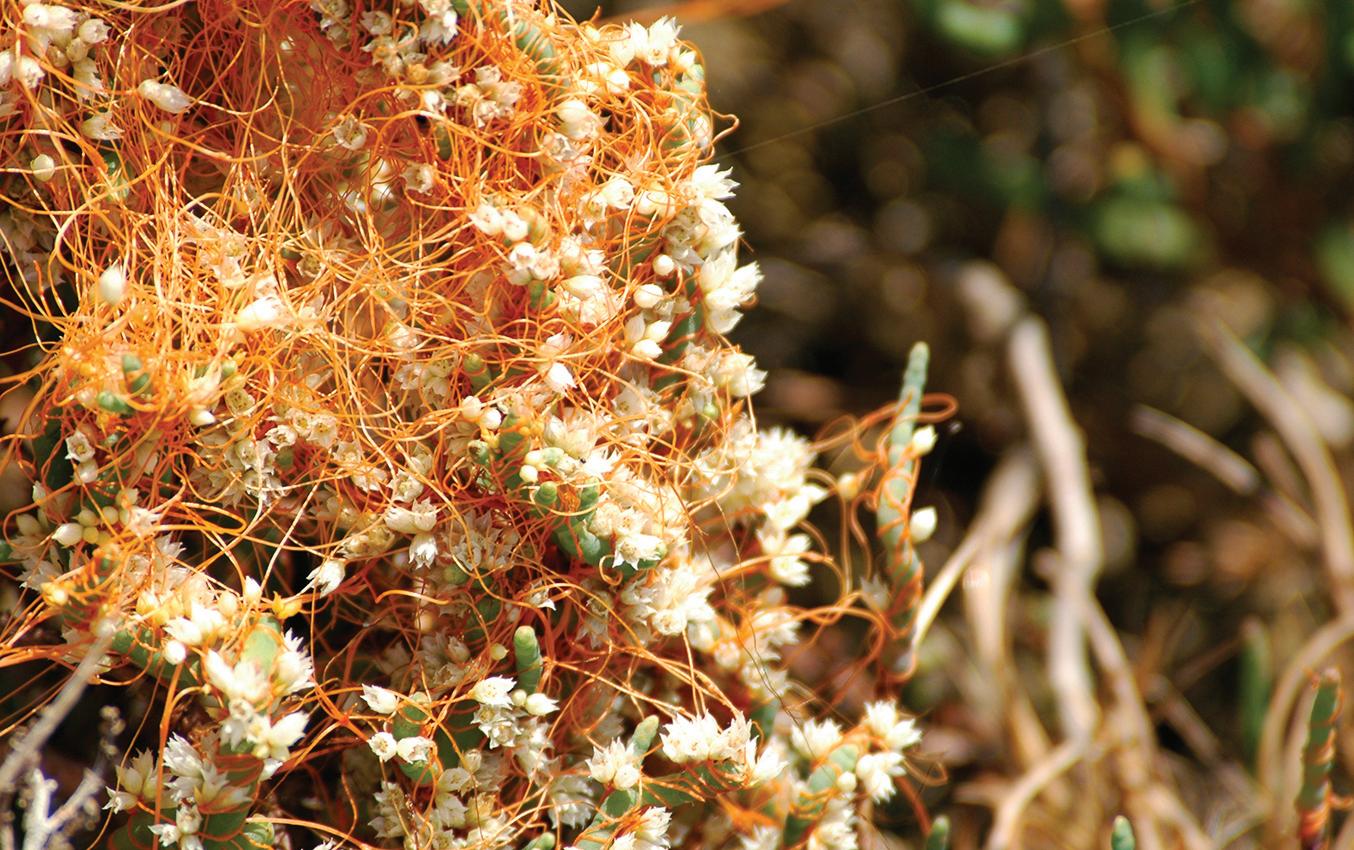
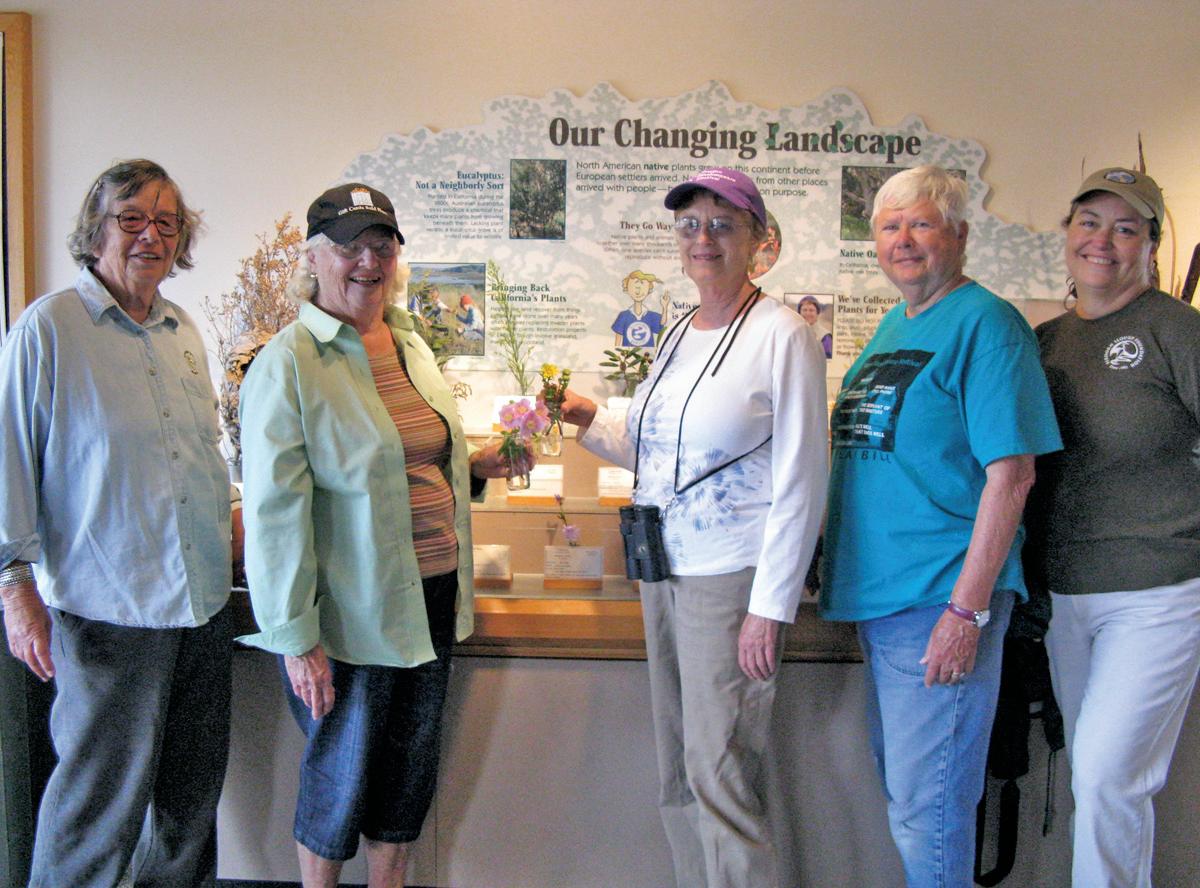
Getting to know the slough’s ever-changing landscape is a real joy. “But one of the best parts of the job is just walking the trails with each other, talking and catching up,” laughs Laura DeMars. “It’s a great project! I look forward to it every week!”
Returning to the Visitor Center with a long list of birds and a basket bursting with flowers, the group places blooms into jars with little placards that state their common and scientific names as well as their native or invasive status. The volunteers artfully fill the display, balancing it for symmetry and color. It’s a beautiful way to learn what to look for when you’re on the trails, and to recall the names of plants you saw when you come back.
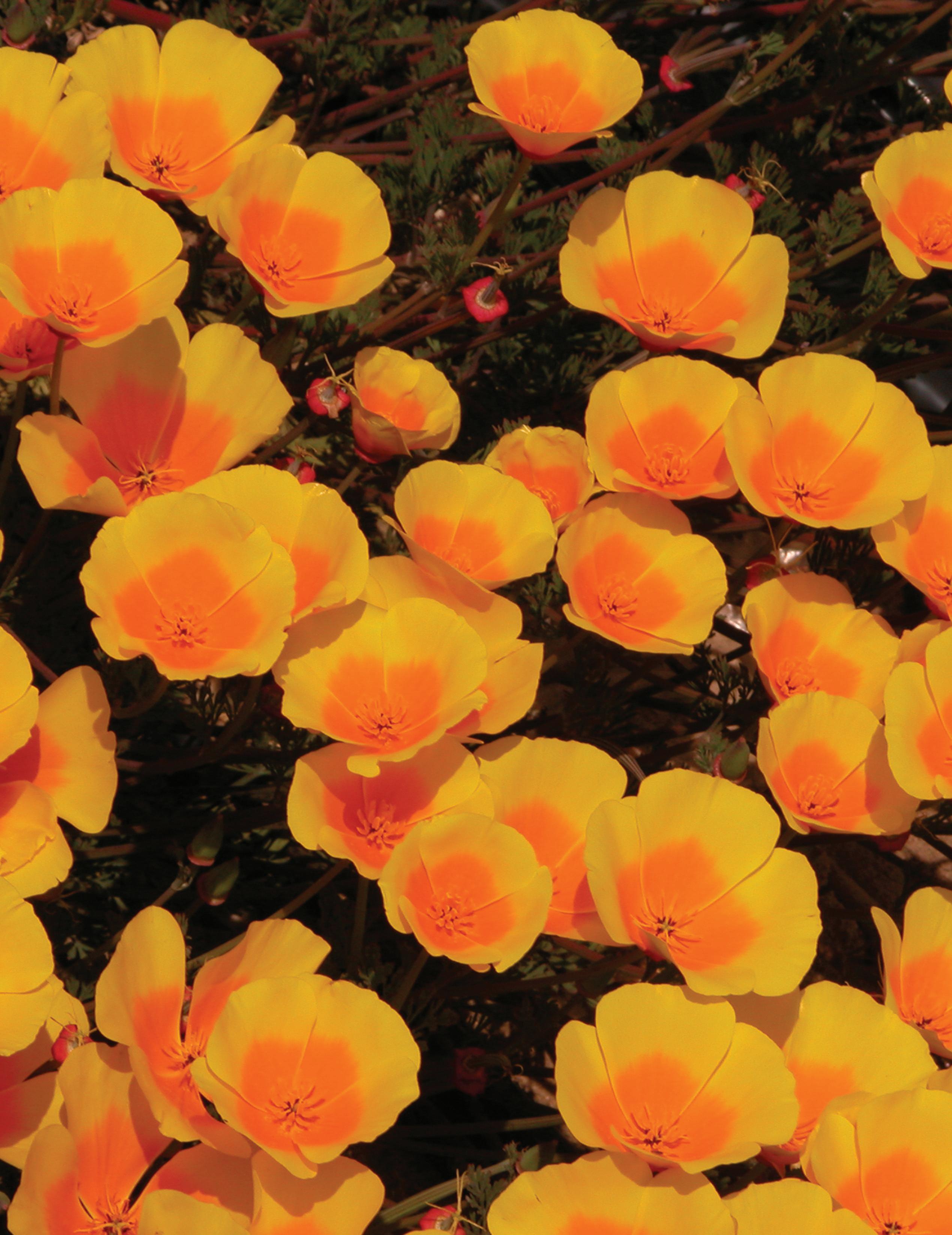
Beginning November 1st the price of an Elkhorn Slough Reserve day pass will increase from $2.50 to $4, and an annual pass will increase from $19.25 to $20.75. This is the first increase in these admission fees since the Reserve initiated the wildlands program 22 years ago. The annual pass is good at all Department of Fish and Game Wildlife Areas. California hunting or fishing licenses are also valid for entry to the Reserve.
With five miles of hiking trails, more than 340 bird species, and ancient coastal oaks to enjoy, the Reserve remains one of the best values on the central coast.
When you think of Elkhorn Slough, we hope you think of a great kaleidoscope of biodiversity—an ever-changing landscape of life. Yet while some of the life you’ll find in the slough comes and goes with the seasons, you can rely on our oak trees to be here come fog, rain, or sun. These stalwart beauties don’t just make for a pretty landscape; they work hard to keep the slough healthy.
Oak trees hold soil in place with their roots, shade more delicate plants with their canopy, filter groundwater, and serve as a sturdy home for squirrels, owls, moths and other creatures. Some of the oaks in the slough have been here for hundreds of years, through many changes and many seasons. You can feel it when you see them. They are truly majestic.

Other oaks are younger; the Elkhorn Slough Foundation works to restore native oak woodlands in places where they had been cleared in the past, and some of our properties have many tiny trees bursting with potential. We give them water and protect them from herbivores when they are young and vulnerable because we know that they will repay our efforts by keeping the land healthy for generations.
From the protection they provide to understory vegetation to the structure they give to the soil on our hillsides, oaks are an important part of the watershed.
Next year will commemorate the 30th year of the Elkhorn Slough Foundation. To help celebrate, we will be including images of the changing slough from the past three decades. Combine this with the many great submissions from both professional photographers and amateurs and we think you’ll agree: the 2012 calendar is full of stunning images that capture the history and spirit of Elkhorn Slough. As always, the calendar has holiday and moon phase information in addition to high and low tides for Elkhorn Slough. If you want one, order it through our web site with a donation of just $18.95!

continued from front page
get.” Welcome to the neighborhood Dave. We are pleased to have you as part of our community!

Did you notice brick-red waters in South Marsh this summer? In Monterey Bay and along the California coast, there are sometimes “red tide” events, where certain phytoplankton species become abundant enough to color the water.
ESNERR Stewardship Coordinator Andrea Woolfolk noticed unusually red water in South Marsh this September and called on Raphe Kudela’s harmful algal bloom lab at UCSC to collect and analyze water samples from the slough.
Why all the fuss? Often the blooms produce no harmful effects, but some kinds of phytoplankton contain toxins that can accumulate up the food chain, passing from phytoplankton all the way to marine mammals and shorebirds. These toxins can be incredibly dangerous, in some instances leading to paralytic shellfish poisoning or death when ingested. Phytoplankton blooms of such toxic algae are called “harmful algal blooms” or HABs.
After analyzing the samples, it was determined that Elkhorn Slough had seen its first documented bloom of a tiny organism called Mesodinium rubrum (also known as the ‘jumping ciliate’ because of how actively it swims). The jumping ciliate is technically a zooplankton that has a symbiotic relationship with a unicellular organism that photosynthesizes inside of it . It is not a toxin-producing species so there are no immediate concerns about animal health. However, any sort of algal bloom has potential negative repercussions for the
community. The bloom can impact water quality by lowering its dissolved oxygen, making it difficult for some species to weather the event.
DFG Education Coordinator Kenton Parker investigated some red-colored waters in North Strawberry Marsh around the same time as the South Marsh red tide, and identified two different species of phytoplankton causing the color change. You can see photos of these organisms on our facebook page.
Keep your eyes open for the various algal and microbial blooms taking place in sites around the estuary. Recent conditions of high nutrients, light and temperature seem to have been favorable for explosive population growth by diverse species this summer, so you may see some interesting colors in the water. Some blooms probably occurred naturally in our system, and others are likely fueled by human nutrient additions or conditions imposed by artificial water control structures. But in any case, they are all interesting to explore.

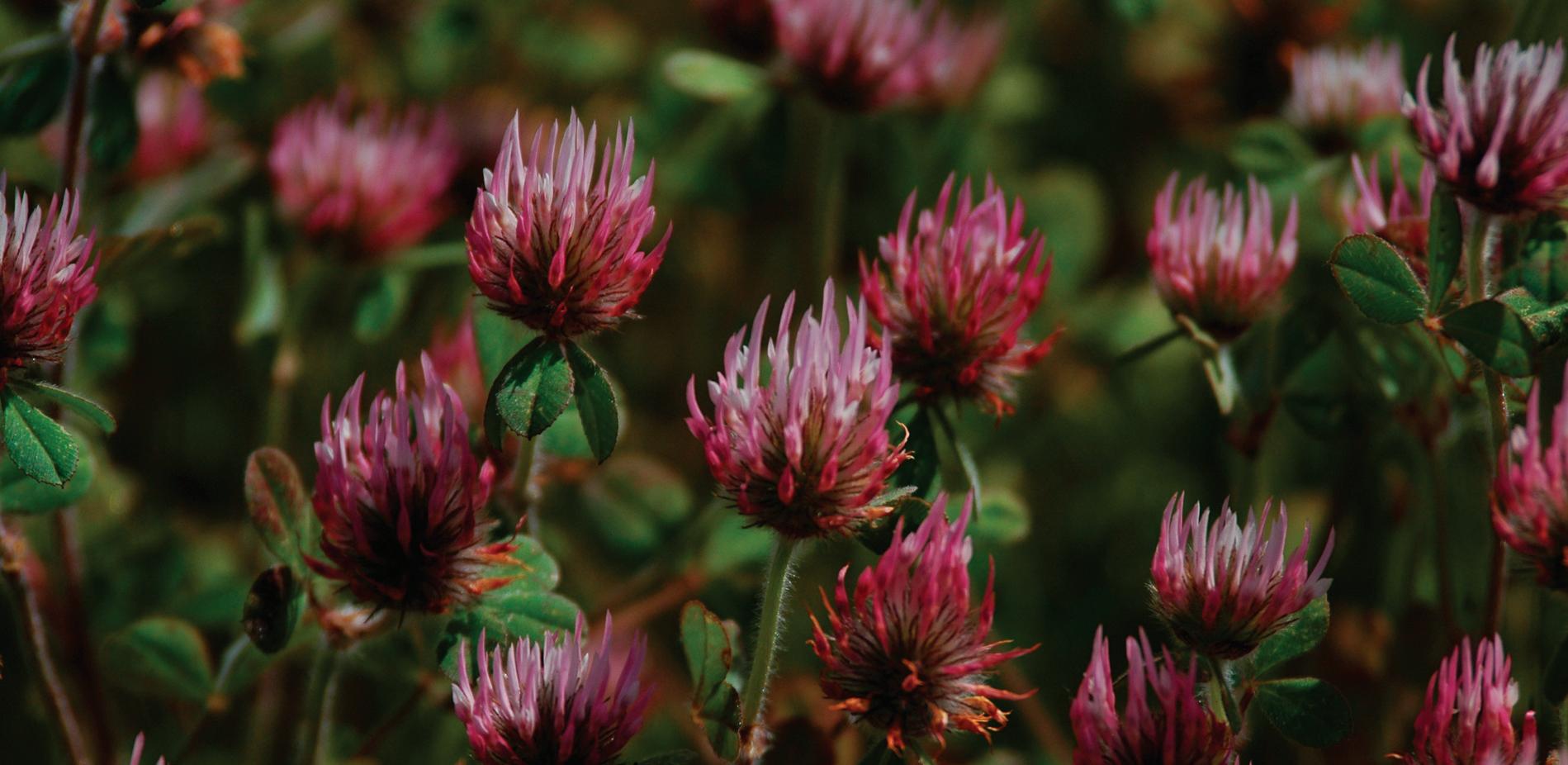
consume more oxygen than is produced. When algae and accumulated organic matter decompose in the absence of oxygen, a distinctive hydrogen-sulfide smell is produced.
All salt marshes produce sulfides—the family of chemicals that causes the characteristic smell of old eggs—because their soil is also devoid of oxygen (or anaerobic). The hydrogen sulfide in anaerobic wetland soils can be released when soils are disturbed, accounting for that strong wetland smell. However, some of the marshes in Elkhorn, like North Marsh over by Kirby Park, have an extra pungent sulfur smell because of eutrophication. “It’s getting hit by a 1-2-punch,” explains Water Quality Specialist John Haskins. “The water there is very shallow and there is very little flushing by the tides.” Shallow water has less volume to store up oxygen during the day, so that at nightfall it is quickly depleted by aquatic organisms. This is exacerbated by the lack of mixing with oxygen-rich water from the slough’s channel, which would bring in new oxygen to the system.
Kayaking the slough’s main channel, the water is clean and fresh. Walking near tidally restricted marshes reveals the chemistry of sulfide production, an aromatic experience. This is not because the marshes receive more nutrient load than the main channel—they don’t. It’s because the water in the marshes doesn’t get flushed out as often as water in the main channel. Each day nutrients are washed from the entire watershed (notably from the lower Salinas River) out to sea on the ebbing tide. When the tide turns, some of those nutrients are then carried up the slough by the incoming tide. In areas where the
Steve Webster, Chariman of Board, Elkhorn Slough Foundation

As a marine biologist I have always been intrigued by the immensity of the ocean, where life ranges from microbes to the largest of all animals, the blue whale. I’ve spent years studying and teaching marine biology in part because this diversity always keeps things interesting.
Elkhorn Slough is only seven miles long. Nevertheless, the diversity of the area is hard to match. Not far from the mouth of the slough lies Monterey Canyon (deep enough to hold one and half Grand Canyons). The vast frontier of the deep sea is at our doorstep. Throughout the slough the southern sea otters feast on a bounty of sea life that draws large numbers of marine mammals. At Hudson’s Landing the slough narrows into marsh and melds into hillsides of oak woodlands. In just a few miles we’ve gone from deep open ocean to hillsides of oaks and the rare tapestries of maritime chaparral.
The water and the land offer a variety of habitats and ecosystems — coastal marsh, riparian forest, freshwater wetlands, maritime chaparral and associated oak woodlands and grasslands, in addition to highly productive cultivated farmlands. As a land trust, the Elkhorn Slough Foundation embraces all of these as priorities for protection and conservation into the future.
The diversity of the Elkhorn Slough doesn’t stop with its habitats or even with the wildlife (birds, marine and terrestrial mammals, endangered amphibians, fishes and invertebrates) that depend on this unique place. Just between the Elkhorn Slough Foundation and our partner the Elkhorn Slough Reserve a significant number of people are engaged in activities throughout the slough. There are researchers studying the life, water, and land of the slough; there are stewards restoring areas that have been changed by human occupation; there are educators introducing the marvels of the slough to teachers and students; and there are dedicated staff and volunteers sharing this remarkable place and ensuring it will be here to inspire future generations.
It can be easy to lose ourselves in a single aspect of the slough; the birds or plant restoration or the wonder that connects you personally to our work. Yet, should you take a moment to look around and see all of the activities, all the people, all the diversity, it just might take your breath away. The Elkhorn Slough isn’t a big place, but its mixture of water, land, wildlife, and people that has blended together into a powerful force for nature, research, education and conservation.
We hope you will join this diverse group of dedicated people, and become breathless with the rest of us! Please come along with us for a walk, tour or talk. We welcome the whole community to stretch your curiosity here and view the natural world through the window of the Elkhorn Slough watershed.
continued from page 6
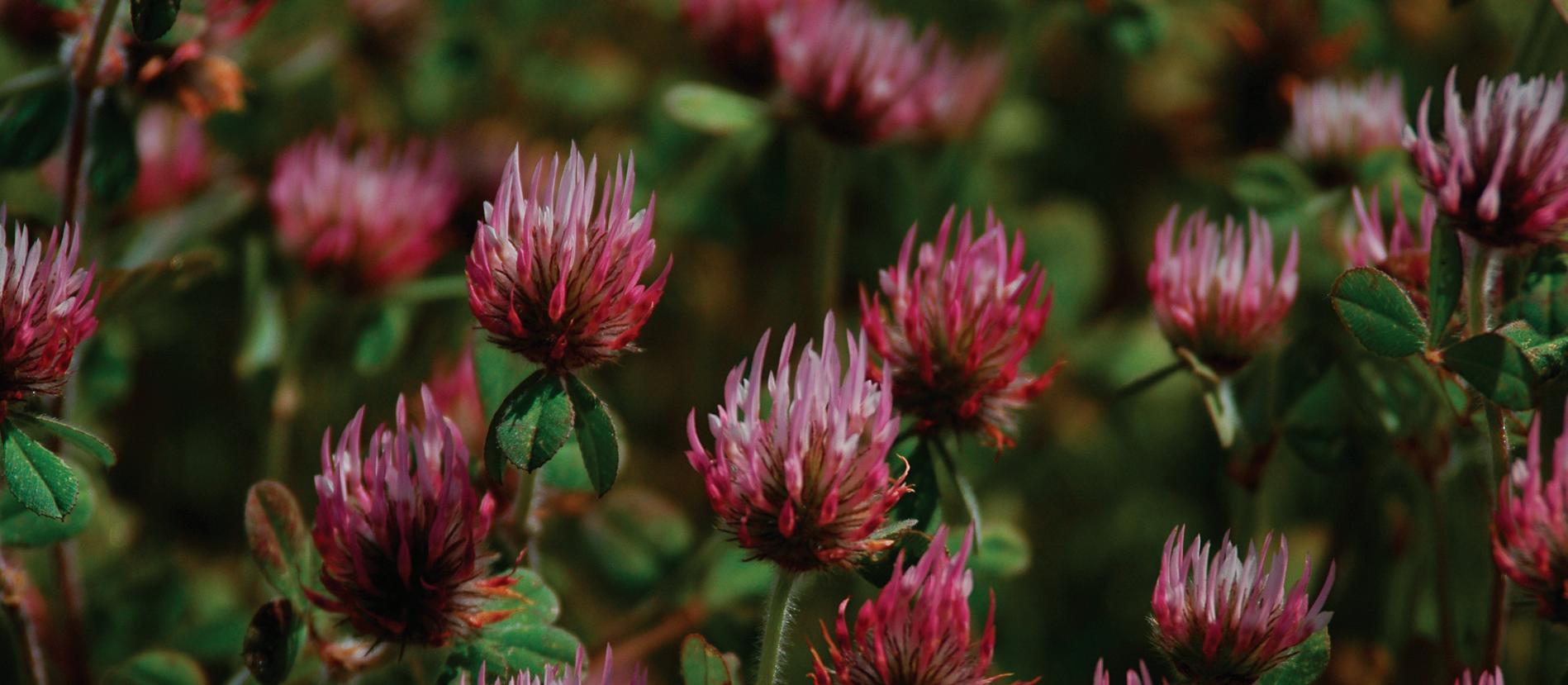
currents are weak or where water exchange is restricted by tide gates, nutrients persist longer, allowing for excessive algal growth.
The Reserve’s ongoing studies have led to questions about managing land and water in the watershed, which researchers are working to answer. “We know that introducing more oxygen to the slough can be done, but there are costs that tend to offset the benefits,” John states. “Increasing the water level in the marshes can lessen the negative impacts of eutrophication, but it can also drown out rare habitat and increase tidal erosion, which is already a serious problem of its own.
Researchers have several management options on the table. They can open the tide gates to increase flushing, which would improve water quality. It could also potentially flood the County road and drown rare tidal marsh habitat. They could deepen the ponds behind the tide gate to allow more oxygen to build up throughout the day, but that would eliminate some important bird habitat. An appealing option is to improve the existing tide gates so that fresher tidal water can mix within the restricted area without raising the water level—an engineering project with some significant cost.
As these options are considered, the basic challenge remains: to balance the ecological and management needs to achieve the healthiest possible slough.

P.O. Box 267
Moss Landing, CA 95039
U.S.
Moss
Join us!
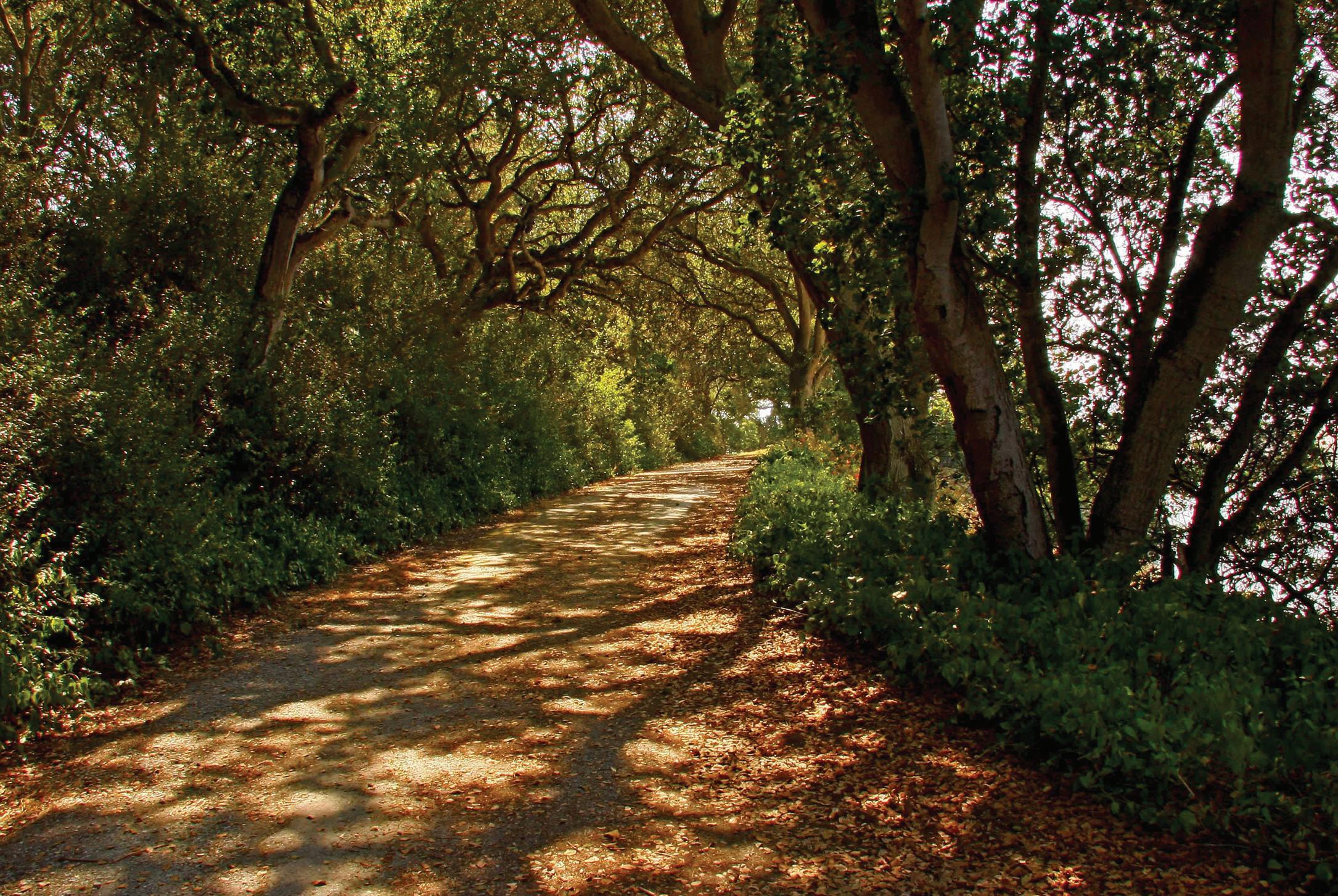
If you’re not yet a member of Elkhorn Slough Foundation, we hope you will join today. Your membership directly supports the conservation and restoration of one of California’s last great estuaries and the abundance of life centered here.
Members receive a 10% discount at the Elkhorn Slough Bookstore located in the Reserve Visitor Center and invitations to ESF member events, including walks on our lands and kayak tours of the Slough. We will keep you informed of our work through Tidal Exchange and our online news alert, Slough Buzz
Elkhorn Slough National Estuarine Research Reserve & Visitor Center 1700 Elkhorn Road, Watsonville, CA (831) 728-2822
Open Wednesday–Sunday, 9:00 a.m.–5:00 p.m.
Early Bird Tours First Saturday each month, 8:30 a.m.
Join expert Rick Fournier for early birding. Meet at the Visitor Center; $4.00 day-use fee.
Docent-led Tours of the Reserve Saturdays & Sundays 10:00 a.m. & 1:00 p.m. Tours meet rain or shine at the Visitor Center; $4.00 day-use fee.
ESF MEMBER EVENTS- RSVP online or call Quinn at 728-5939:
October 22 Member Event: Fall Nature Walk – Take a walk with our Stewardship Director, Kim Hayes and learn how the land we protect fits into the mosaic of the watershed. You’ll see native plants, restored landscapes and breathtaking views of the slough.
November 12 Member Event: Fall Birding Walk – Join us on one of our beautiful, bird-filled properties for a guided Saturday morning hike. Birding expert Rick Fournier and ESF staff will lead you through locations that feature our migrating and resident feathered friends. Binoculars provided.
Please check our website for more details on these events. We look forward to seeing you soon. www.elkhornslough.org